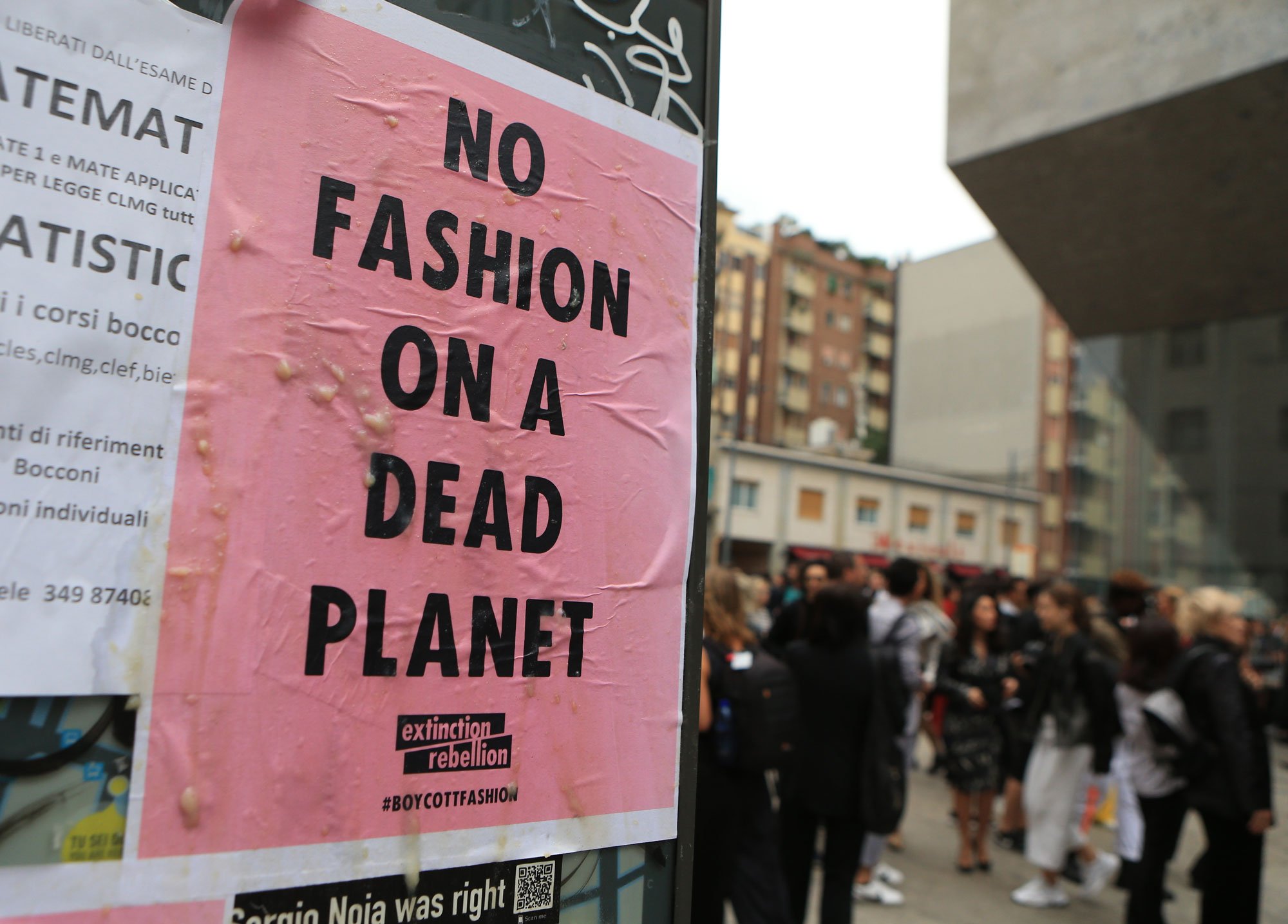Now or never for sustainable clothes production
It's time to persuade fashion high street brands to embrace a more sustainable approach to clothing production, writes Dr Alan Hudd, the founder of digital textile dyeing and finishing company, Alchemie Technology.

The fashion industry is one of the most polluting on the planet, however consumers remain largely unaware of its real impact on the environment.
The fashion industry is responsible for 10% of global carbon emissions, more than international flights and shipping combined.
In the UK alone, consumers continue to buy an average of 26kg of clothing every year. But while the impact of clothing production on the planet is a real problem, fashion brands continue to ignore the root cause of the damage.
One of the most damaging elements of the garment manufacturing process is the dyeing of fabrics, and addition of properties such as wicking and waterproofing, which are still done by decades-old – and highly polluting – traditional methods.
The total amount of clothes we buy globally creates 553bn tonnes of CO2 and 8.3tn tonnes of dye-polluted wastewater each year – from the dyeing process alone.
And if fashion brands don’t act now to change the way their clothes are dyed, the CO2 emissions generated by clothes production are predicted to reach 2.5 gigatonnes by 2050.
Is progress being made?
Fashion designer Stella McCartney has been a pioneer of environmentally responsible fashion for over 20 years, committed to circularity and protecting the planet for tomorrow. Most recently, at her Paris Fashion Week show, her SS23 line featured the ‘world’s first-ever luxury bag crafted from mycelium,’ while another collection used grape waste to create a plant-based alternative to animal leather.
With a similarly environmentally focussed mission, Pangaia’s climate positive strategy focusses on minimising waste, increasing efficiencies, with a particular focus on reducing their water footprint. Recently the brand announced its latest capsule collection, in which the garments have been dyed with food waste ingredients as an alternative to reactive dyes, minimising the use of chemicals and utilising food waste.
But while some high-end designers are paving the way for change, getting high street fashion brands to adopt similarly sustainable production methods is a bigger ask.
A growing trend in the world of high-street fashion is for brands to appoint celebrity ‘sustainability ambassadors’ in the hope that famous faces will promote sustainable behaviour amongst consumers and spark positive change.
Boohoo recently announced its partnership with reality TV star Kourtney Kardashian Barker in September. While her 45-piece collection is set to be made from recycled cotton and polyester, critics have pointed out that this is not a big enough change, with the collection only representing a tiny proportion of the 40,000 annual styles released by the company.
Other brands, like PrettyLittleThing, have turned their attention to reselling, launching celebrity-endorsed resale platforms where consumers can sell their unwanted clothes in return for a discount off their next purchase on the brand’s website, which some may call contradictory.
Understandably, moves such as these have faced huge backlash for being disingenuous and ‘too little too late’, but accusations of greenwashing are not overly helpful. Any step, however big or small, to generate debate around sustainability in fashion must be regarded as a positive.
The good news is that the technology exists for the fashion industry to stop the pollution caused by dyeing. Alchemie Technology is on a mission to encourage brands and manufacturers around the world to switch to alternative dyeing methods.
If textile dye houses around the globe were to switch to waterless dyeing systems 470bn tonnes of CO2 and 7.9tn litres of wastewater could be saved from damaging the environment each year.
It is often perceived the sustainable option is more expensive, but in fact, by adopting energy-efficient, sustainable dyeing methods now, brands are not only being kinder to the environment, but they are also making substantial energy and water savings at a time when the problem is threatening the very survival of the manufacturers that brands depend on. The working conditions are also cleaner, safer, and less damaging.
It’s all about thinking long term. If fast-fashion giants really want to show their commitment to sustainability, they would invest in cleaner manufacturing solutions and more sustainable clothing production and would encourage their suppliers to do so too.
Main image credit: Pierre Teyssot / Shutterstock.com
BACK TO TOP
COMMENT